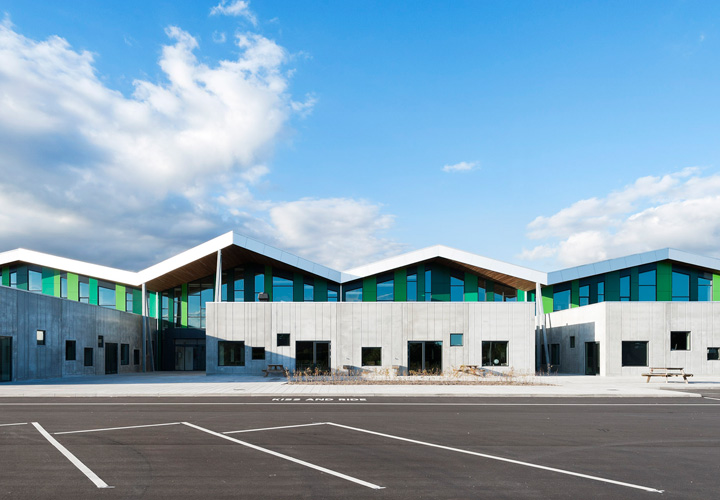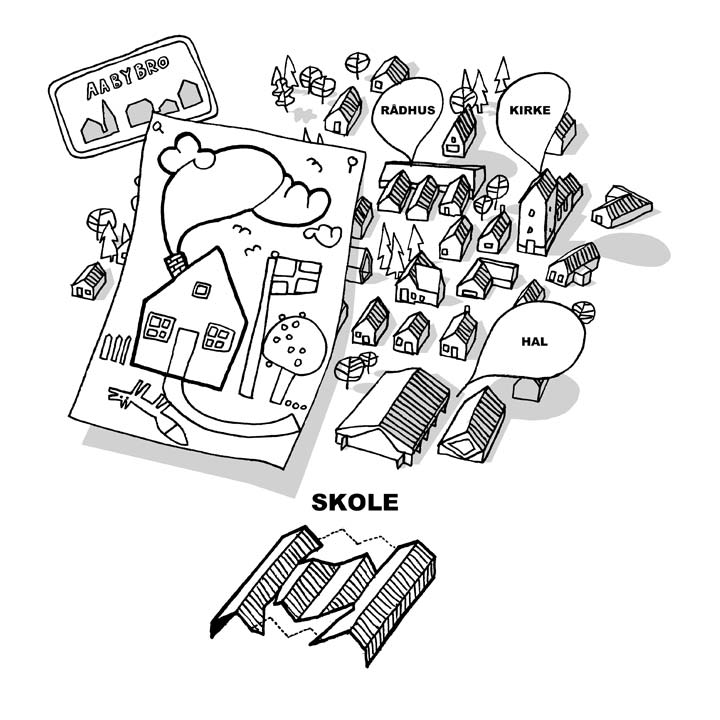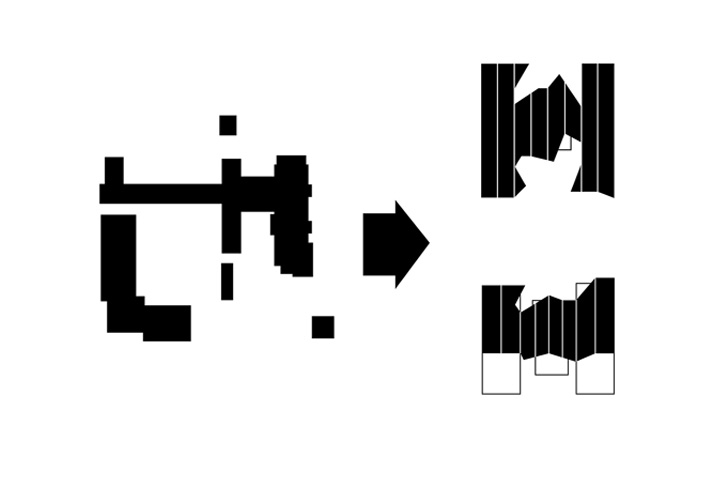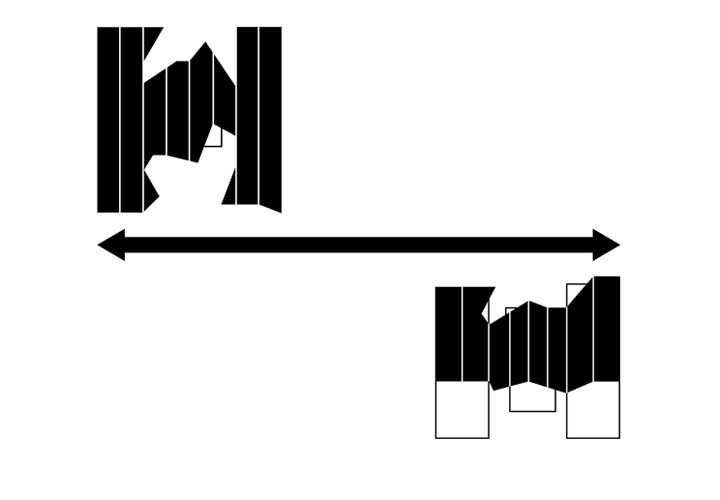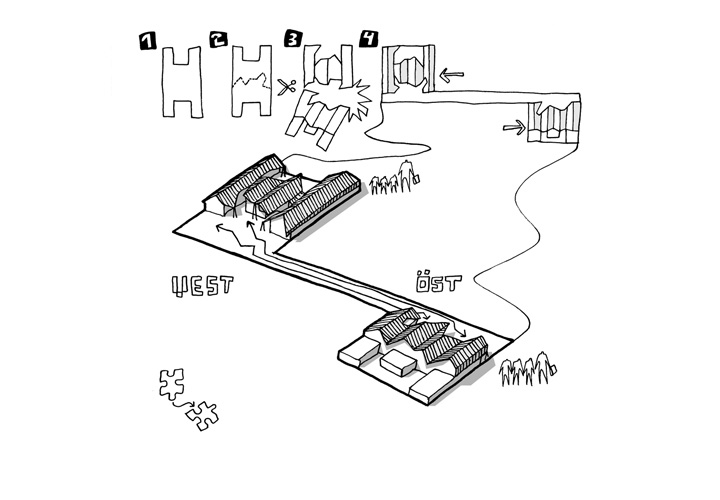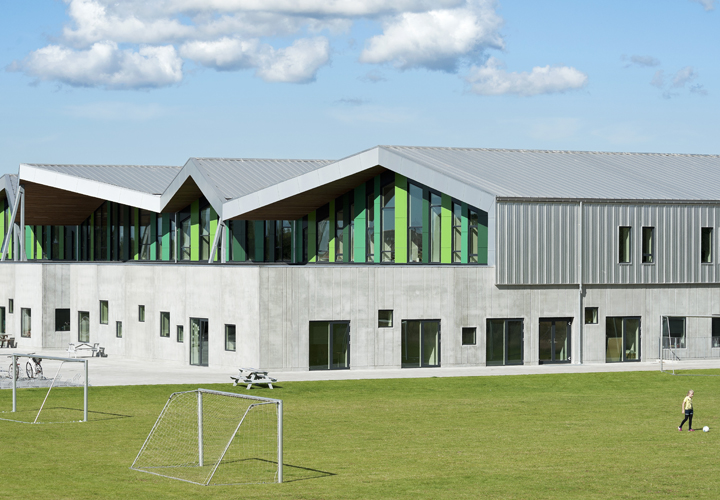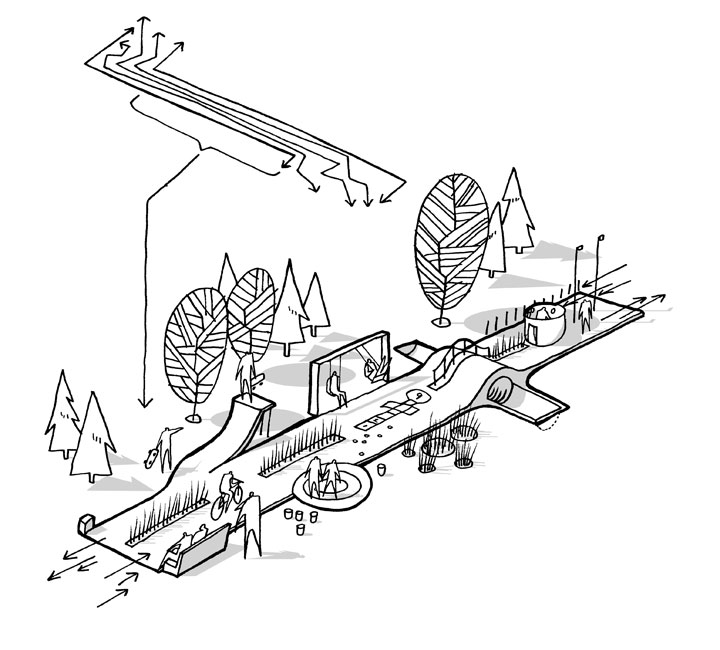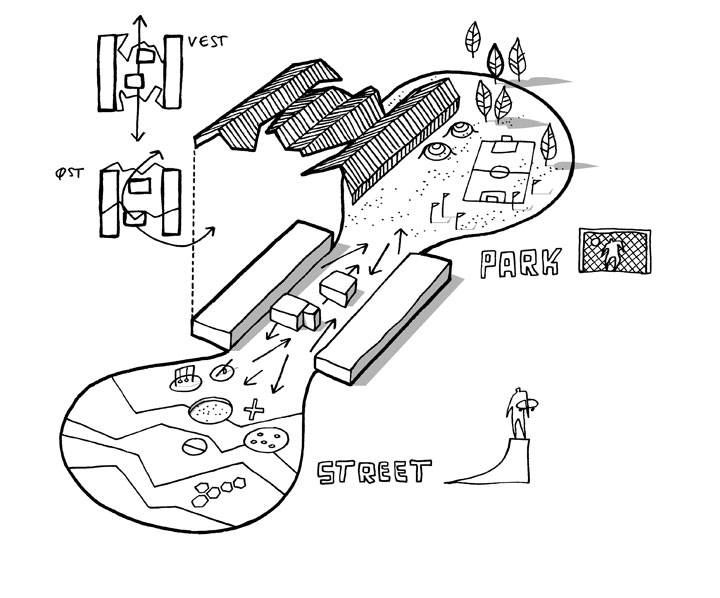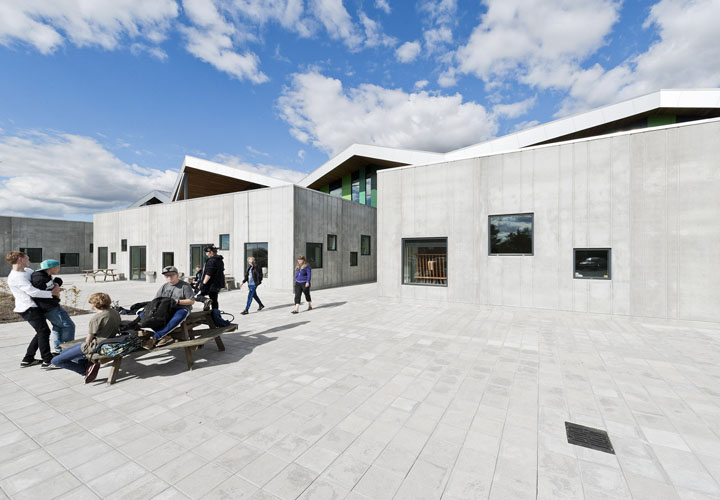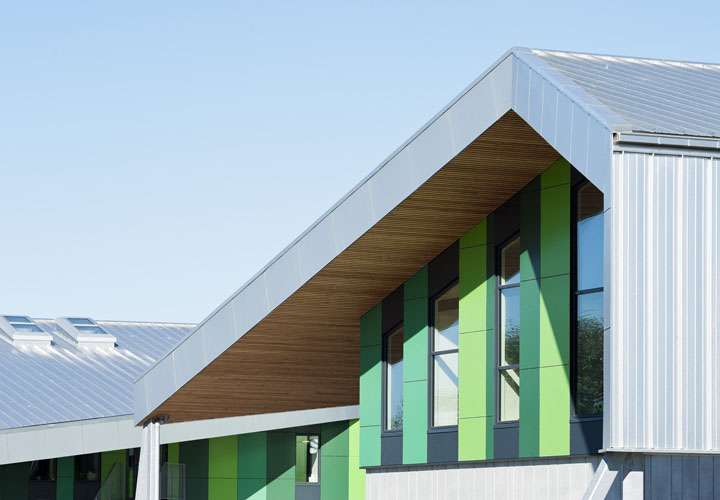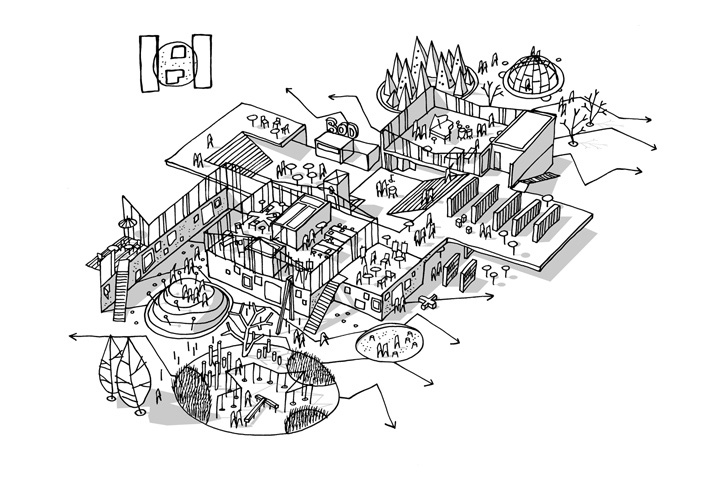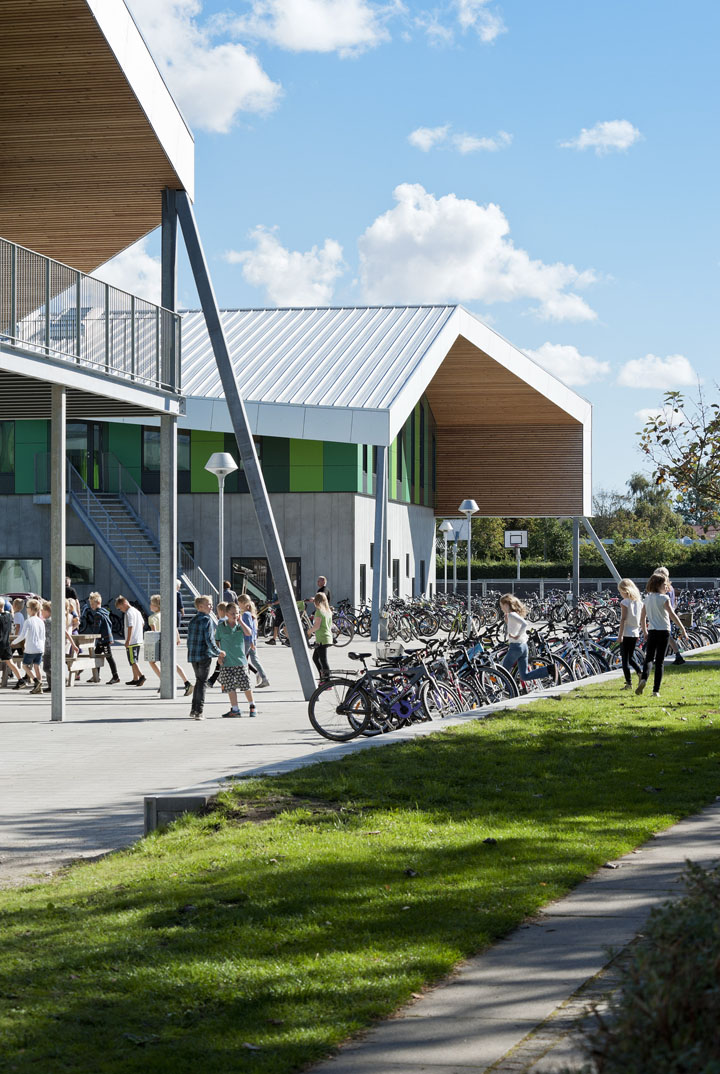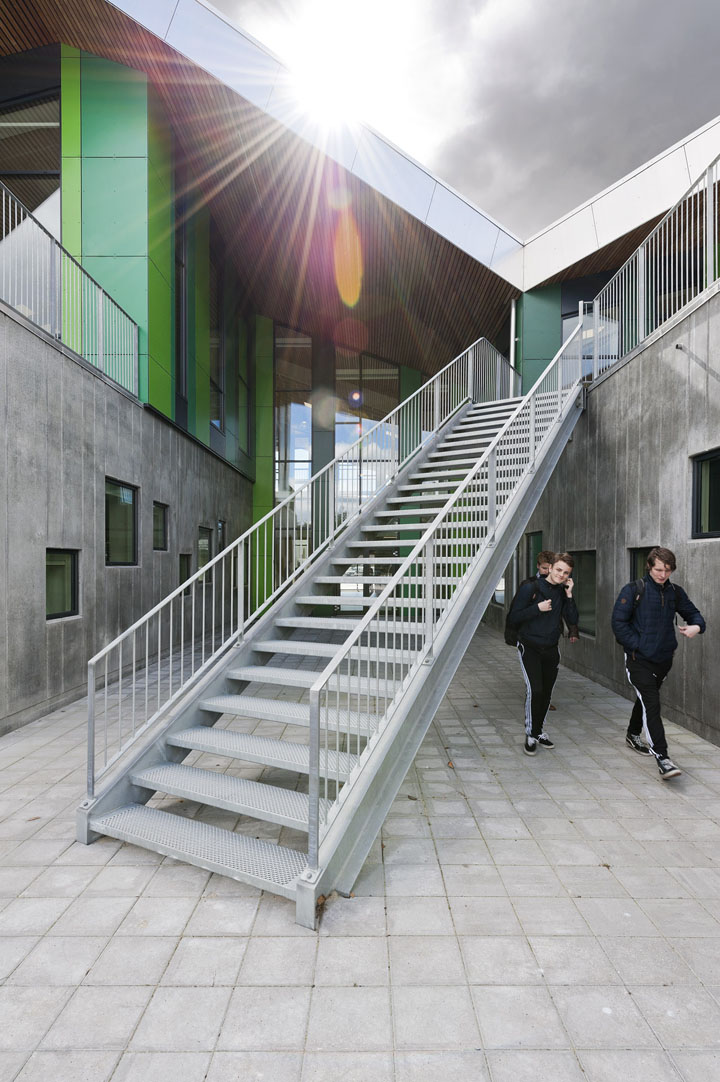AABYBRO
- LOCATION: AABYBRO, DK
- CLIENT: JAMMERBUGT MUNICIPALITY
- SIZE: 12.000 m² NEW BUILDING
- YEAR: 2013 – 2016
- STATUS: COMPLETED
- ARCHITECT: CEBRA
- ARCHITECT OF RECORD: KPF
- LANDSCAPE ARCHITECT: CEBRA
The new Aabybro School with four parallels for approx. 1.100 children is located on two separate, yet closely connected sites, 250 m apart. Despite this physical separation, the school has to function and be perceived as one unified whole. Therefore, the design uses one large basic shape that is cut in half and shifted. The two buildings show a close affinity to each other and naturally appear as siblings.
In order to create recognisability and a harmonic relation between the school and the city’s pitched roof houses in varying scales the roof constitutes the project’s architectural cornerstone. The distinctive shape of the roof and the slanted eaves give the school a unique appearance without being intrusive or alien to the area. The two buildings show a close affinity to each other provided by the pitched roof and by identical facades with a sturdy base and a contrasting more delicate first floor in three different shades of green. The pitched roof and visible eaves evoke familiarity along with creating a dynamic environment for learning. The facade’s asymmetric windows and distinctive green colors appear as a daring and playful architectural expression.
The school sections can basically be described as H-buildings – parallel wings with an atrium cross beam. But the design expands the cross beam to form a single space that is both indoors and outdoors. This diverse zone houses important shared facilities such as the library, canteen and workshops. The area between the central heated zone and the outdoor areas creates a space of roofed terraces, which allow teachers to include the outdoor areas in their lessons – regardless of the weather.

